
Music of Nepal refers to the various musical genres played and listened to in Nepal. With more than fifty ethnic groups in Nepal, the country's music is highly diverse. Genres like Tamang Selo, Chyabrung, Dohori, Adhunik Geet, Bhajan, Filmi music, Ghazal, Classical music, songs and Ratna music are widely played and popular, but many other less common genres are yet to be cataloged. Western musical genres like Rock, Metal, Hip-Hop, Rap, R&B also regularly feature on the Nepalese music charts. Most of the country's musical bands are based in the Kathmandu valley. Musical genres from Tibet and India have greatly influenced Nepalese music.

Music of Sikkim ranges from traditional Nepali folk music to Westernized pop music. The ethnic communities, Lepcha, Limbu, Bhutia, Kiratis and Nepalis constitute the music which is an ingrained part of Sikkimese culture.
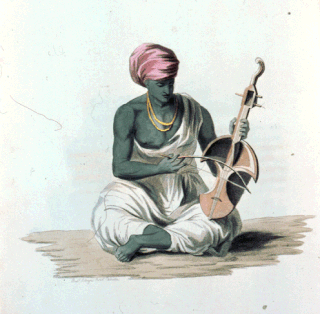
A sarinda or saranda is a North Indian stringed folk musical instrument similar to lutes or fiddles. It is played with a bow and has between ten and thirty strings. The bottom part of the front of its hollow wooden soundbox is covered with animal skin. It is played while sitting on the ground in a vertical orientation.

The Gandarbha caste or Gaine are a Dalit community which belongs to the Indo-Aryan ethnic group from the central, hilly region of Nepal. They have also been called a "caste of professional musicians" and "itinerant bards." By tradition they make their living by singing Gandarbha Geet or Gaine Geet, a type of folk song. The Gandarbhas traditionally work as travelling musicians and play traditional folk and historical songs. They improvise songs too, incorporating news into them as a service, in return for which they receive donations of food or other things. They use the Nepali sarangi, a type of violin, as their main musical instrument. The sarangi has been an iconic musical instrument identified with the Gandarbha people. The instrument has replaced another instrument they played, the aarbajo, which was larger and "more cumbersome."

The Panche baja' is a set of five traditional Nepali musical instruments that are played during holy ceremonies, especially marriages. Panche bajas are usually played by the Damai and the Gaine cates in the Hindu tradition. They are played using the rhythm of folk Nepali songs.It is named as Panchje Baja because in Nepali panch means 5 and the set includes five different types of instruments and baaja means musical instruments.

Muna Madan is a 1936 Nepali-language episodic love poem written by Laxmi Prasad Devkota. It is about Madan, newly married to Muna, who leaves for Lhasa in Tibet to make his fortune, despite protests from his wife.
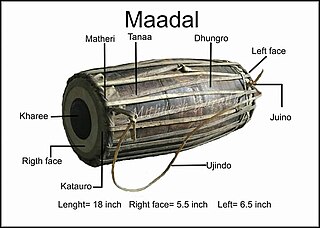
The madal or maadal is a Nepalese folk musical instrument. The madal is used mainly for rhythm-keeping in Nepalese folk music. It is very popular and widely used as a hand drum in Nepal. The madal has a cylindrical body with a slight bulge at its center and heads at both ends, one head larger than the other. It is usually played horizontally in a seated position, with both heads played simultaneously.

The Nepali Sarangi is a Nepali folk instrument. It is a chordophone played by bowing. Traditionally in Nepal, the Sarangi was only played by people of Gandarbha or Gaine caste, who sing narrative tales and folk song, however, in present days, its popularity extends beyond the Gandharba community and is widely used and played by other caste members as well. It has also garnered much interest in other music genres, such as Nepali rock and film music. While the Sarangi has become the quintessential Gandharba instrument, while its counterpart, the arbajo, which is a plucked lute, has fallen into obscurity.

Hira Devi Waiba was an Indian folk singer in the Nepali-language and is hailed as the pioneer of Nepali folk songs.

Sajha Publications is the oldest publishing house of Nepal. It was established in 1913 and is funded by the Government of Nepal. Headquartered in Lalitpur, it has regional branches in Biratnagar, Pokhara, Nepalgunj and Dhangadi.
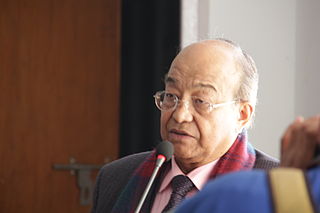
Tulsi Prasad Joshi is a Nepalese literary figure and folklore expert. He is a prominent name in modern Nepali poetry. He was honoured with the title Bisista Sahitya Siromani at the International Poetry Festival in India in April 2013.

Narayan Rayamajhi is a Nepali composer, lyricist, feature-film script writer, film director, and producer. He has steadily excelled as a singer and he has made a significant contribution to promote Nepali music industry. He has written more than fourteen dozen folk songs, more than six dozen modern songs, two dozens soap-opera songs, three musical plays, two documentaries and has he directed two movies Gorkha Paltan and Pardeshi

Navneet Aditya Waiba is an Indian Nepali-language folk singer and the daughter of the late Hira Devi Waiba, the pioneer of Nepali folk music. Navneet and younger brother Satya Aditya Waiba (producer/manager) are the only artists in the Nepali folk music genre who sing and produce authentic traditional Nepali folk songs without adulteration or modernisation using mostly organic and traditional Nepali music instruments.

Tamang Selo is a genre of Nepali folk song sung by the Tamang people of Nepal and is widely popular among the Nepali-speaking community in Nepal, in India, and around the world. It is usually accompanied by the Tamang instruments: Damphu, Madal and Tungna. A Selo could be very catchy and lively or slow and melodious and is usually sung to express love, sorrow and stories of day to day life.

Dohori, also known as Lok Dohori, is a type of Nepali folk song usually sung by two teams, one of men and another of women. It is in the form of question and answer where a team sings a question and the opponent replies through an equally lyrical impromptu couplet and vice versa. The term dohori, means 'back and forth' and refers to the exchange of lyrical phrases between the contesting singers. The song production is collaborative and involves many individuals.
Nepal Academy of Fine Arts (NAFA) is the umbrella organization of Nepali artists, researchers and art critics, and an arts institution for research and for exhibitions. A museum in Kathmandu, in a neoclassical building from the 1930s, presents collections of both traditional and contemporary paintings and other works. It was formerly part of Nepal Academy. The Nepal Academy of Fine Arts has also published a number of books about art and Nepali artists.
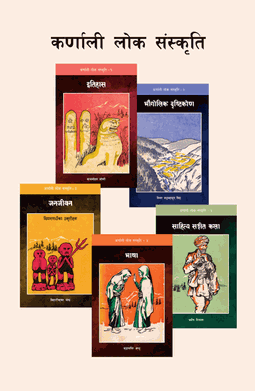
Karnali Lok Sanskriti is a 1971 Nepali language collection of research in a form of book about the Karnali region, which lies on the western part of Nepal. It was written by a group of writers and scholars namely Pradeep Rimal, Chudamani Bandhu, Bihari Krishna Shrestha, Sthirjunga Bahadur Singh and Satya Mohan Joshi. The book has five volumes each describing history, geography, society, language, and literature of the Karnali region. The book was awarded Madan Puraskar in 2028 BS (1971). The book is considered a pioneer study about the Karnali region.
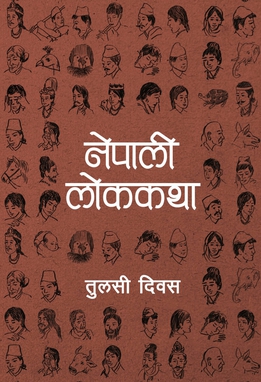
Nepali Lok Katha is a Nepali-language folk tales collection by Tulasi Diwasa. It was published in 2031 BS by Nepali Rajakiya Pragya Pratisthan. It consists of folktales form various regions and languages across Nepal.
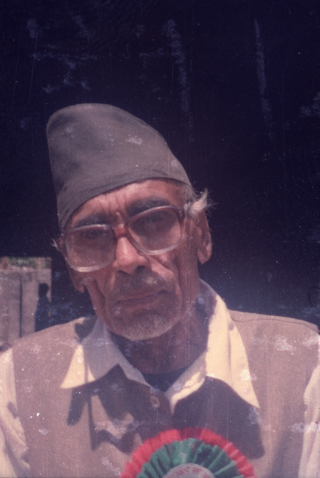
Ali Miya was a Nepalese folk poet. He was popularly known as "Lok Kavi".

















